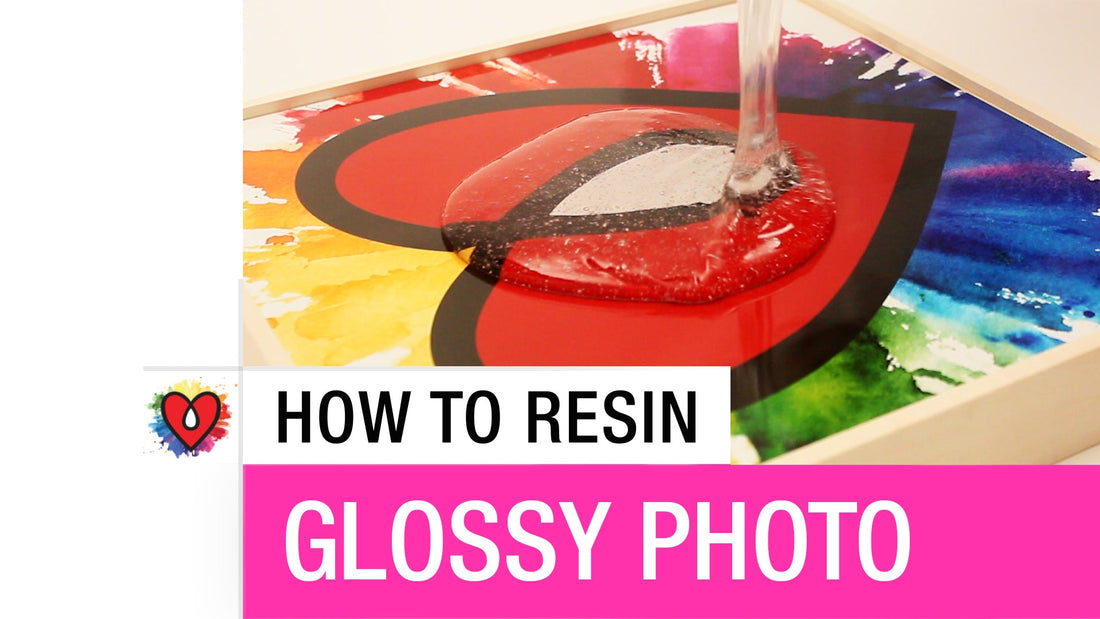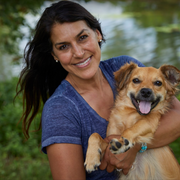We love using wooden art panels here at ArtResin - you can mount your artwork and pour your resin directly on the panel! Some panels even have a raised lip specifically designed to contain resin - they make for a super easy pour with clean edges.s.
Measure, mix, pour, spread, cover and wait, and in 24 hours your photograph will go from good to gorgeous!
Let's get started ....
Supplies:
- A 12 x 12" wooden art panel
- a glossy photo print sized to fit the panel
- sealant ( brush on or spray sealant )
- glue stick or spray adhesive
- a brayer
- ArtResin epoxy resin
- A pair of nitrile gloves, a stir stick and spreader
- a level
- a measuring cup with easy to read measurement lines
- a mixing container
- a handheld torch like our Artist's Torch
- toothpicks
- an empty plastic tote or cardboard box with the flaps cut off to protect your piece while it dries
Steps:
1. Print Your Photo
Print your photo/image on glossy photo paper sized to fit the panel.

A Note On Sealing Pictures With Resin
We always recommend testing your particular materials out with ArtResin on a scrap piece so you know exactly what to expect before you resin your final project.
Glossy photo paper does not generally require a sealant as its glossy surface allows the resin to sit on top without absorbing. However, for matte photos (which may absorb the resin) or if you simply want to err on the side of caution, you can certainly go ahead and seal your photo using a spray sealant marked safe for photos.
You may also choose to seal in the following cases:
-
Sealing over low quality paper. It's a good precaution to seal when applying ArtResin over matte photo paper, or soft/low quality paper that may otherwise absorb the resin, causing dark, wet spots in your work or causing your work to bleed.
-
Sealing over loose material. With a medium like chalk pastel or charcoal, or when resining over a loose material like glitter, you want to be mindful of loose particles that might get mixed up and float away in your liquid resin. For peace of mind, you can certainly err on the side of caution and seal your artwork first - use a spray fixative rather than a brush on sealant.
- Sealing the wood panel. Being an organic material, wood may contain trapped air which can release into your resin as bubbles. There are many variables that can affect gas bubbles: the type of wood, how dry the wood is, humidity etc. Sealing wood with a spray or brush-on sealant (or even painting them with acrylic paint) is an option to help to prevent bubbles. We've used these wood panels enough to know that we don't need to pre-seal them, but we always recommend testing with your particular materials so you know exactly what results to expect before you resin your final project. Again, if in doubt, you can never go wrong by sealing first if it makes you feel more comfortable.
Mount your work directly to the panel using adhesive. We like using either a glue stick or spray adhesive. For best results, smooth the drawing out with your hands or roll with a brayer to ensure that it's evenly mounted to the panel, with no air pockets.
For best results, smooth the drawing out with your hands or roll with a brayer to ensure that it's evenly mounted to the panel, with no air pockets.
2. Calculate How Much Resin You Need
Using our Resin Calculator, simply enter the length and width of your piece to determine how much ArtResin you’ll need.
💡 TIP: a standard 1/8" or 3 mm coating for a 12" x 12" panel requires 5 oz resin (2.5 oz resin and 2.5 oz hardener). Measure the lip on your panel as they can vary. The panel in our video, for example, has a 1/4" lip. In order to fill it to the top, you'd use double the amount: 10 oz total resin (5 oz resin and 5 oz hardener).
3. Stir Thoroughly
Wearing gloves, measure accurately (by volume) precisely equal amounts of resin and hardener. Stir thoroughly for 3 minutes total, ensuring you scrape the bottom and sides of your mixing container as you go.
💡 TIP: for our very best measuring and mixing tips, read the blog How To Measure And Mix Resin And Hardener.


4. Pour Resin
Pour the ArtResin onto the centre of your piece and spread it out to the edges using a plastic spreader or a popsicle stick. You'll have about 45 minutes of working time before the resin gets too thick to work with.
💡 TIP: Read our blog How To Pour And Spread Epoxy Resin for more resin tips and techniques!


5. Use your Torch
Using your Artist’s Torch, hold the flame a couple of inches above the resin surface just long enough to pop the bubbles, keeping the torch moving from side to side at all times.
💡 TIP: if you're nervous about using a torch, don't be! Read our blog with all you need to know about How To Use A Torch On Epoxy Resin.

6. Remove any missed bubbles
Once the piece has been torched, look at the resin in the light for any missed bubbles, tiny hairs or bits of dust, using a toothpick to fish them out.
💡 Read our tips on how to prevent resin bubbles!
7. Cover your Resin Art Piece
With a plastic tote or a cardboard box ( with the flaps cut off ) cover your piece and let it sit for 24 hrs until it’s dry to the touch.

After 24hrs has passed, reveal your piece!
💡 TIP: the resin will be dry to the touch at the 24hr mark. At this point, you're free to hang and admire your artwork on the wall, absolutely, but if you're planning on packing and shipping your artwork, please wait at least 72hrs until the resin has fully cured.
We hope you found this how to resin a glossy photo informative and helpful!
Do you want to learn more about resin art techniques? Check out our how-to tutorials:
- Introduction to Resin Art
- How to Make Ocean Resin Art
- How To Create A Black Resin Ocean With A Gold Crackle Shoreline
- Selective Embellishment
- How to Make Resin Flow Art
- Create Lacing and Cells in Resin
- How to Make Epoxy Resin Matte
- How to Make Mandala Resin Art
- How to Make Resin Art with Dried Flowers
- How to Resin Mixed Media Paintings (Step-by-Step Tutorial)
- How to Resin Collage Art
- How to Resin Marker Pointillism
- How to Resin Spray Paint
- How To Make A Resin Crystal
ArtResin: The Original Epoxy For Resin Art.



